This was published 4 years ago
Most multicultural cities: World's most fascinating neighbourhoods and city quarters
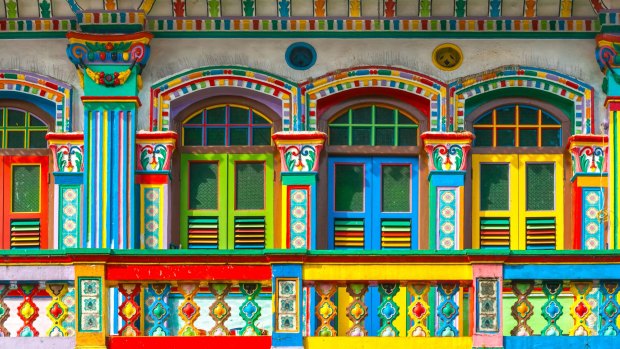
Little India, Singapore. This is Singapore's liveliest and most colourful ethnic enclave, with old colonial arcaded houses, a colourful assortment of contemporary street art and plenty of Indian shops and eateries.Credit: SHUTTERSTOCK
A recent visit to Gibraltar reminded me how interesting enclaves are. This tiny, rock-dominated territory on the Mediterranean features red post boxes, policemen in helmets and pubs serving Sunday roasts. Gibraltarians seem paler and grumpier than the Spanish, but similar in their volatile passions, and speak a curious English in a mixed East End and Spanish accent.
This splinter on Spain's edge might be fervently British, but can hardly be immune to its neighbouring nation's presence. Although the culture that sets enclaves apart makes them startling and noteworthy, even more interesting is that they're inevitably influenced by the larger community in which they're embedded. Fascinating and unique hybrids result.
The most curious of enclaves are often found right in the middle of cities. Such urban quarters are mainly created by merchants, colonisers or immigrants who gather together for mutual reassurance, assistance and trade. The result is a distinct ethnic (or sometimes religious) neighbourhood. The inhabitants of such quarters often eventually move on, but lingering imprints of their culture, cuisine and architecture remain.
Such quarters are places apart, yet are subtly changed by the cities that surround them. A Little India isn't just a straightforward, identikit piece of bigger India. A Little Italy isn't simply an uprooted suburb of Naples. Nor is an American Chinatown the same as an Australian Chinatown. Enclaves have combination mini-cultures all their own, with history and peculiarities that make them intriguing destinations for the curious traveller.
FRENCH CONCESSION, SHANGHAI
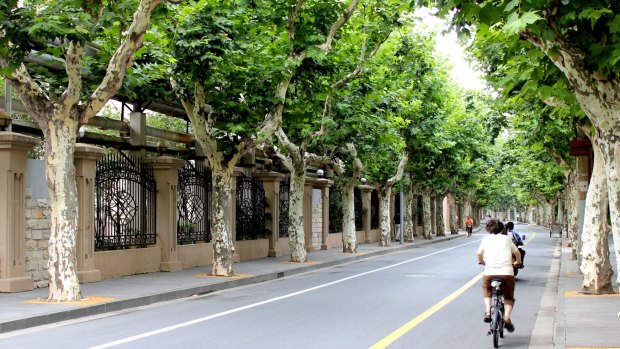
Credit: Alamy
THE BACKSTORY
This large Shanghai district was the largest French concession (or extraterritorial enclave) in China, established in 1849 and abolished in 1943. It was Shanghai's most prestigious residential area among Westerners of all nationalities, including many aristocratic White Russians who fled the Russian Revolution.
WHY WE LOVE IT
Although the French are long gone, reminders include streets lined with plane trees, turn-of-the-century Western architecture and colonial-era mansions, some converted to boutique hotels. Huaihai Road is a fashionable shopping street and the Xintiandi area is the epicentre of Shanghai's nightlife, but you'll still find tranquil alleys of antiques shops, teahouses and noodle bars.
DON'T MISS
Though increasingly touristy, the narrow, criss-crossed laneways of Tianzifang are a delight for blending original, modest architecture and residential buildings with interesting boutique stores, art galleries and design studios – a fine antidote to Shanghai's mega-developments. See meet-in-shanghai.net
KOTA TUA, JAKARTA
THE BACKSTORY
The spice-hunting Dutch East India Company arrived here in 1596 and was soon constructing canals and the walled town of Batavia (later Jakarta). Adjacent Sunda Kelapa port served the Dutch trading empire for 300 years.
WHY WE LOVE IT
Indonesia's traffic- and concrete-smothered capital reveals a more tender heart here, with tranquil backstreets overlooked by Dutch and art deco buildings and Portuguese churches, and hosting a lively arts scene. Kali Besar canal is lined with impressive Dutch townhouses with Chinese-influenced woodwork. Taman Fatahillah square has well-preserved whitewashed, colonial buildings such as the governor-general's palace.
DON'T MISS
The Museum of Fine Arts and Ceramics, housed in a former Dutch courthouse, displays wood sculptures, ceramics and paintings by Indonesia's best contemporary artists. See jakarta-tourism.go.id
CHINATOWN, LONDON
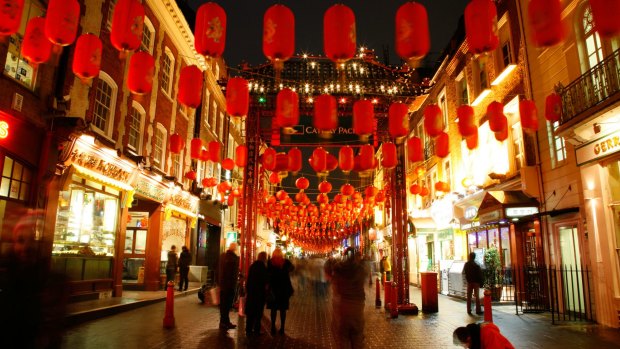
Credit: Alamy
THE BACKSTORY
When London's Chinatown originated is uncertain, but it arrived on the tourist map following World War II thanks to returned servicemen with a hankering for Asian food. It centres around Gerrard Street in the West End and has been retrofitted with Chinese kitsch such as dragon lampposts and upturned eaves. Although few Chinese live here, many come to shop.
WHY WE LOVE IT
Like most Chinatowns you don't come for the aesthetics or architecture but for the lively buzz and dining, which has vastly improved in recent years thanks to a new generation of young, internationally-influenced chefs from across Asia, offering more authentic and more inventive fare in dozens of restaurants, dim sum bars and cocktail lounges.
DON'T MISS
China Exchange (chinaexchange.uk) is the district's arts and culture hub, featuring top-notch concerts, art exhibitions and talks by well-known experts. See chinatown.co.uk
LITTLE INDIA, SINGAPORE
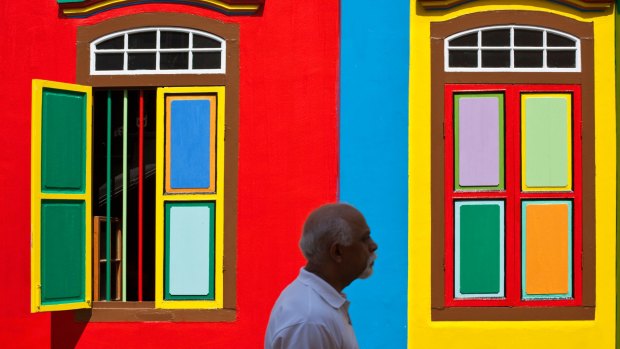
Credit: Alamy
THE BACKSTORY
The Rochor River provided water and transport for early dhobi clothes-washers. Other Indian immigrants followed, settling around Serangoon Road. The first buildings in southern Indian style gave the district its name, though it has never been exclusively Indian. Stop at the excellent Indian Heritage Centre (indianheritage.org.sg) for background.
WHY WE LOVE IT
This is Singapore's liveliest and most colourful ethnic enclave, with old colonial arcaded houses, a colourful assortment of contemporary street art and plenty of Indian shops and eateries. Tekka Centre is especially brilliant for combining an eye-popping wet market with a hawker centre that is unusual in Singapore for its emphasis on Indian dishes and snacks – and especially scrumptious flatbreads and pancakes.
DON'T MISS
Sri Veeramakaliamman Temple (srivkt.org), entered through an ornate gateway topped by Hindu deities, and plastered in vibrant statues and frescoes. Locals circulate with incense and flower garlands. See visitsingapore.com
LITTLE HAVANA, MIAMI
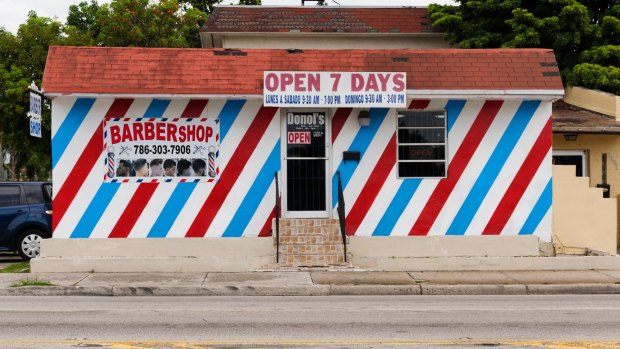
Credit: Alamy
THE BACKSTORY
Cuban immigration swelled after Fidel Castro came to power in 1959, and Little Havana was already prominent by the mid-1960s. It centres around Calle Ocho (SW 8th Street) with its Walk of Fame celebrating Cuban immigrants made good, such as salsa singer Celia Cruz and pop singer Gloria Estefan. Half of Miami's population are Cuban-Americans.
WHY WE LOVE IT
Some of Miami's best bars and coffeehouses, certainly its best Cuban restaurants, regular cultural events, street buskers, evening dancing and great music clubs are all part of Little Havana's vibrant appeal. Retirees play dominos and smoke cigars in Maximo Gomez Park. Cuban Memorial Park features various Cuba-related monuments.
DON'T MISS
Stylish, intimate Hoy Como Ayer (hoycomoayer.us), one of the district's best music venues, where you can enjoy performances of folk music, ballads, contemporary timba and salsa and other dance music. See miamiandbeaches.com
KOREATOWN, TORONTO
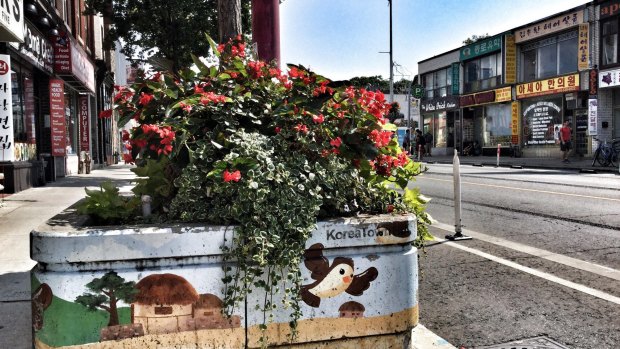
Credit: Alamy
THE BACKSTORY
Koreans began arriving in Canada mainly from the late 1960s. Most ended up in Toronto, which now has a Korean population 50,000 strong. Although few now live in Koreatown (centred on the intersections of Bloor Street and Manning Avenue in Seaton Village), many still shop and do business here.
WHY WE LOVE IT
Koreatown is compact and has no significant sights, but anyone craving a chilli hit, the latest in K-pop fashion or beautiful handmade Korean crafts need look no further. There are great restaurants and bakeries. It you're up for a flavour adventure, Barrio Coreano (playacabana.ca) has smart cocktails and Mexican-Korean fusion cuisine.
DON'T MISS
Further east on Bloor Street, Royal Ontario Museum (rom.on.ca) has an especially good collection of Asian art, and North America's largest Korean art gallery, showcasing stoneware, porcelain, calligraphy, painting and Buddhist artefacts developed over two millennia. See seetorontonow.com
BO KAAP, CAPE TOWN
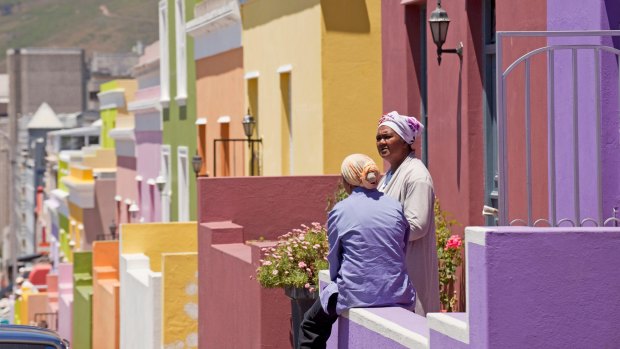
Credit: Alamy
THE BACKSTORY
Batavian slaves imported from Asia's Dutch territories (and later their descendants) settled here from the mid-18th century, providing its original Malay Quarter moniker. Other Muslims from Turkey, India and Madagascar followed. It's the oldest surviving residential neighbourhood in the city and has great outlooks onto Table Mountain.
WHY WE LOVE IT
The Upper Cape district has more pre-1850 architecture than anywhere else in South Africa. The well-restored cottages and mosques of its hilly streets are distinctive for their ornamentation, which includes iron railings and columns, and especially their vivid, cheerful colours. Restaurants serve spicy, aromatic Cape Malay cuisine, which has Dutch, Malay and Middle Eastern influences and is rich in stews, curries, kebabs and sweet puddings.
DON'T MISS
Auwal Mosque (auwalmasjid.co.za), the oldest in South Africa (1794), and the heritage-focused Bo-Kaap Museum (iziko.org.za), housed in Bo Kaap's oldest building. See capetown.travel
GLOVER GARDEN, NAGASAKI
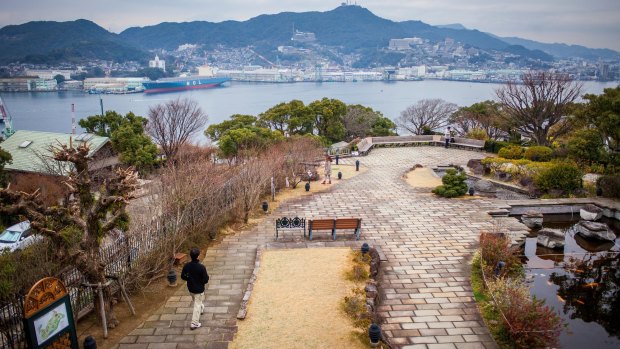
Credit: Alamy
THE BACKSTORY
The Portuguese and Dutch had been earlier, but the arrival of American gunboats in Nagasaki in 1853 reopened reclusive Japan to trade. Western traders moved into the breezy heights above the harbour now known as Glover Garden, where they built European-style villas.
WHY WE LOVE IT
This lovely, leafy hillside district has brilliant views over Nagasaki's hill-ringed harbour and a well-kept, disconcertingly European character. Glover Villa is the oldest Western-style building in Japan (1863), and the interiors of several other homes provide good insight into the eccentric lifestyles of 19th-century Western traders, one of whom founded one of Japan's largest breweries and married a geisha.
DON'T MISS
Head down to the port for Dejima Island (nagasakidejima.jp), where recreated Dutch houses and original leftovers such as cannon and sundials fill in the story of earlier Dutch traders, who arrived in the 1680s. See glover-garden.jp
LITTLE AFRICA, PHILADELPHIA
THE BACKSTORY
Liberians fleeing the civil war of the 1990s were first to arrive, and form the biggest population in this south-west area surrounding Woodland Avenue. They've since been joined by immigrants mainly from other West African nations such as Ivory Coast, Senegal and Sierra Leone.
WHY WE LOVE IT
While many ethnic enclaves become tourist traps divorced from their immigrant origins, this is the real deal. It's a great place to discover more about various African cuisines in neighbourhood restaurants painted in lurid colours. In summer, pop-up grills on the roadside beneath fluttering African flags add further temptations for inquisitive eaters.
DON'T MISS
African Small Pot (africansmallpot.com); its Mauritanian chef has 40 years of international experience and specialises in West African kebabs and seafood. La Mandigue (lemandinguephilly.com) also has a great range of West African specialties, an extensive vegetarian menu and live music. See visitphilly.com
LIBERDADE, SAO PAULO
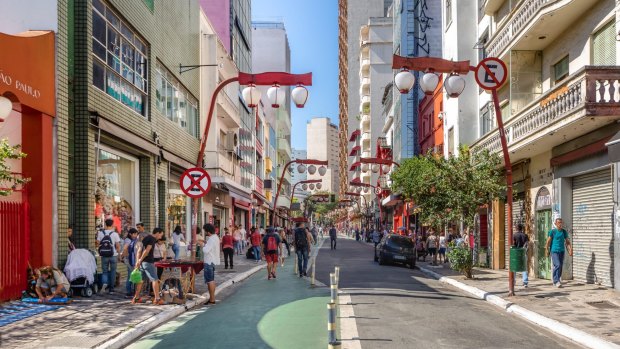
Credit: Alamy
THE BACKSTORY
Impoverished by the abolition of feudalism, rural Japanese workers arrived in Brazil in the early 20th century, primarily to work on coffee plantations affected by labour shortages. In Sao Paulo, they congregated around Rua Galvao Bueno in Liberdade neighbourhood. An estimated 1.5 million Japanese-Brazilians now live in the megacity.
WHY WE LOVE IT
It's the world's most significant Japantown which, though now home to Chinese, Korean and Indonesian immigrants as well, retains a distinct Japanese sensibility thanks to its cherry trees, lacquered torii gates, lanterns and Japanese supermarkets and bars. Even the McDonald's signage is in Japanese. Street markets erupt at weekends. The food is great – hit Aska Restaurant for terrific ramen noodles.
DON'T MISS
Though old-fashioned and lacking in much English labelling, the Museum of Japanese Immigration (museubunkyo.org.br) is comprehensive and interesting for its treasure-trove of artefacts. See visitbrazil.com
FIVE MORE CURIOUS QUARTERS
BARRIO CHINO, BUENOS AIRES
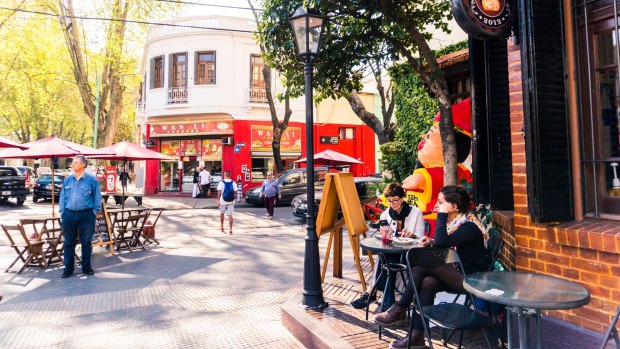
Credit: Alamy
This Chinatown in Belgrano is unusual for its posh-suburb location, relative newness (1980s) and founding by Taiwanese immigrants. Japanese, Koreans and Thais followed, producing its current pan-Asian flavour. It's a great dining destination, with many restaurants also operating takeaway windows. The many vegetarian options will gladden anyone who has had a surfeit of Argentinian beef. See turismo.buenosaires.gob.ar
MARI GIRGIS, CAIRO
Dozens of churches in this old Coptic district trace their origins to the earliest days of Christianity and are beautifully decorated with icons, marble work and wooden screens inlaid with mother-of-pearl. The impressive Hanging Church sits atop a Roman gatehouse. Ecclesiastic treasures from paintings to papyrus books are housed in the Coptic Museum. See coptic-cairo.com
CHRISTIANIA, COPENHAGEN
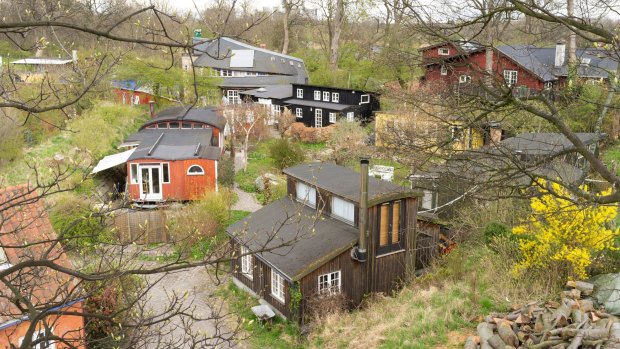
Credit: Alamy
This infamous enclave was founded in the early 1970s by illegal squatters and has been a laissez-faire, marijuana-scented haven for hippies and counter-culture dropouts ever since. The architecture of the mostly self-built homes is eclectic. You'll find coffeehouses, music venues and eco-restaurants. Guided visits are a good introduction to this very alternative quarter. See visitcopenhagen.com
LITTLE ARABIA, ANAHEIM
Disneyland's California hometown has an Arab-dense district clustered around Brookhurst Street, packed with restaurants, lip-smacking bakeries, cushion-scattered hookah lounges, and Middle Eastern and Armenian shops and street markets. It emerged in the 1990s and is constantly being improved by community projects. You'll also encounter four mosques, plus Christian Arab and Coptic churches. See littlearabiadistrict.com
DUTCH QUARTER, POTSDAM
In the 1730s whole streets of tall, gabled redbrick houses arranged around small squares were built for skilled Dutch artisans in royal summer retreat Potsdam outside Berlin. You can visit Jan Brouman Haus (jan-bouman-haus.de) to find out more, or just enjoy the district's pretty architecture, craft galleries, antique dealers and Dutch-speciality cafes. See brandenburg-tourism.com
FIVE AUSTRALIAN COMMUNITIES
CHINATOWN, BROOME
The discovery of pearl shells in 1861 brought Chinese, Japanese, Filipino and Malay divers to Broome. Tiny Chinatown, just emerging from redevelopment, features evocative photos of early 19th-century life along Johnny Chi Lane. You'll come across occasional red lanterns, lacquered gates and tourist rickshaws. See chinatownbroome.com.au
GREEK PRECINCT, MELBOURNE
Greek immigrants congregated along Lonsdale Street after World War II. Little Athens had its heyday in the 1960s and 1970s, but you'll still find Greek restaurants, and shops selling Orthodox icons and Acropolis snowdomes. The Hellenic Museum (hellenic.org.au) highlights Greek culture and its Australian connections. See greekprecinct.com.au
THAI TOWN, SYDNEY
One of Australia's newest enclaves lies along Haymarket's Campbell Street and expands into Goulburn and Pitt streets. You'll find a whole range of Thai businesses, grocery shops and eateries such as the hugely popular Chat Thai (chatthai.com.au). As an added bonus, Korea Town is adjacent. See sydney.com
LITTLE ITALY, BRISBANE
Inner-city New Farm, once the hub of Brisbane's Italian community, is now multicultural, but Casa Italia Community Centre still provides cultural events and language classes. Tuck into Italian food at New Farm Deli (newfarmdeli.com.au) or Angelo's Pasta (angelospasta.com.au), where you can take pasta-making classes. See visitbrisbane.com.au
AFGHAN BAZAAR, DANDENONG
This precinct around Thomas Street in Melbourne's south-east suburb of Dandenong emerged in the early 2000s. Some 20 shops offer Afghan and wider Middle Eastern specialties such as rugs, musical instruments and clothing. Learn more about Afghan food on Thursday evening restaurant tours. See greaterdandenong.com
FIVE TOP LITERARY LOCALES
It isn't just ethnic groups that can create distinctive neighbourhoods. Here are five quarters associated with writers.
BLOOMSBURY, LONDON
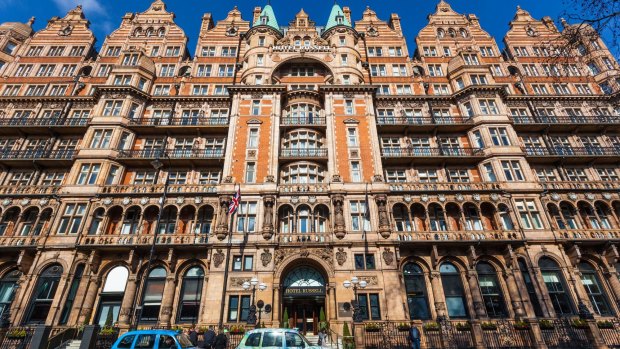
Credit: Alamy
Dickens, Darwin, Yates, Wilde and Woolf are among the writers who lived in Bloomsbury, which is still home to many prestigious publishing firms. Its associations with arts, medicine and the British Museum add further layers of cultural interest. See visitlondon.com
LITERARY CULTURAL DISTRICT, BOSTON
This downtown quarter was home to Emerson, Thoreau, Hawthorne, Frost, Sylvia Plath and Henry James. Follow the literary trail of statues and writers' residences, and attend year-round readings, book festivals and literary events. See bostonlitdistrict.org
LATIN QUARTER, PARIS
Writers (and artists) from Hemingway to Kerouac once crowded this museum-dense, Left Bank quarter surrounding prestigious Sorbonne University. Many French luminaries such as Voltaire, Rousseau, Huge, Zola and Dumas are buried in the Pantheon. See parisinfo.com
BARRIO DE LAS LETRAS, MADRID
The lively, mostly pedestrian district around Plaza de Santa Ana is associated with great Spanish writer Cervantes, the poets Gongora and Quevedo, and baroque-age dramatist Lope de Vega, whose house is now a museum. See esmadrid.com
FRENCH QUARTER, NEW ORLEANS
Twain, Fitzgerald and other writers found inspiration here. You can visit the houses of Tennessee Williams, William Faulkner and Frances Parkinson Keyes. Restaurants Galatoire's and Antoine's were favourite literary hangouts and settings for novels. See neworleans.com
The writer has travelled as a guest of numerous tourism offices and at his own expense.
Sign up for the Traveller Deals newsletter
Get exclusive travel deals delivered straight to your inbox. Sign up now.